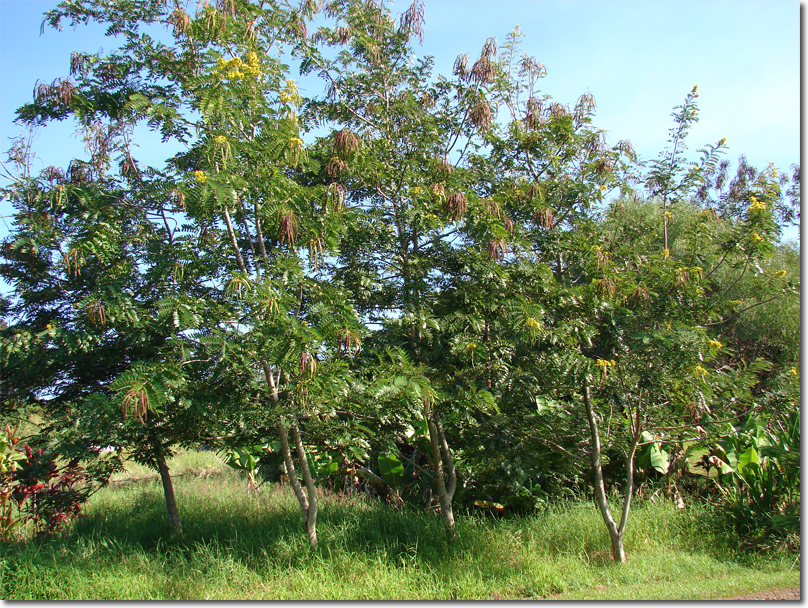|
|


|
|
A medium sized evergreen tree rarely exceeding 20 m in height, with a straight trunk to 30 cm in diameter. The tree has a dense crown and bears large, attractive bunches of yellow flowers. USES The wood can be used for posts, construction, mine timber, furniture, cabinetwork, inlays, turnery, and fuel. Tannin can be extracted from the bark. The tree can be utilized to reforest denuded hills and mining sites, as host for sandalwood, for shade and hedges, as windbreaks, and it can be planted as an ornamental. Mentioned as a possible agroforestry species. The tree cannot withstand cold weather. GROWING PERIOD Fast-growing perennial. The plantations are usually harvested every 7 years, though the rotation for fuelwood may be as short as 5 years on favorable sites or as long as 10 years in dry climates. The tree can attain heights of 5 m in 3 years and 15 m in 10 years. Withstands a dry season of 4-6 months. COMMON NAMES Yellow cassia, Cassia, Waa, Minjri, Muong, Angkanh, Kassof-tree, Bombay blackwood, Thailand shower, Kassod tree. FURTHER INF Scientific synonym: C. florida. Yellow cassia is indigenous to Southeast Asia from Indonesia to Sri Lanka. It can be found at altitudes between sea level and 1400 m, but is generally a lowland species.
Picture courtesy of Forest Starr and Kim Starr |
How a Tanganyika District ensured a Sustainable Supply of Firewood and Building Poles Article
Armed Forces | Art and Culture | Articles | Biographies | Colonies | Discussion | Glossary | Home | Library | Links | Map Room | Sources and Media | Science and Technology | Search | Student Zone | Timelines | TV and Film